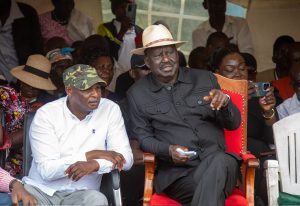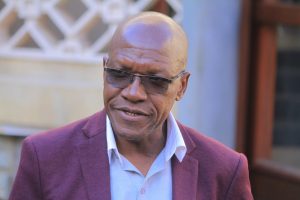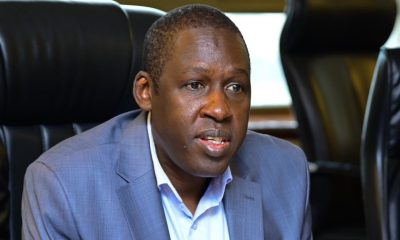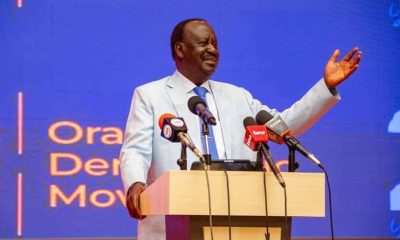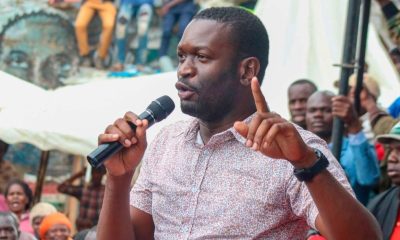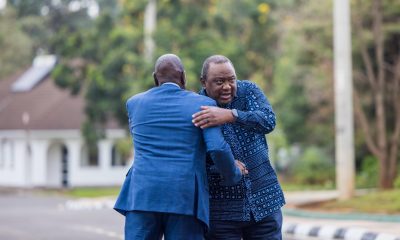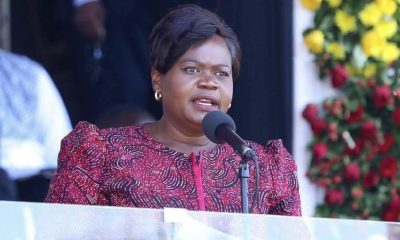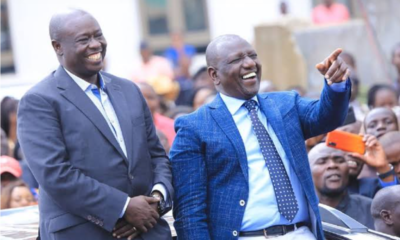Politics
Raila Defends Gen Z Protesters: “They Are Not Crazy, They Are Our Children”
“Tusiende uchaguzi wa 2027 na hasira mingi,” he cautioned, urging leaders not to let anger fester until the next electoral cycle.
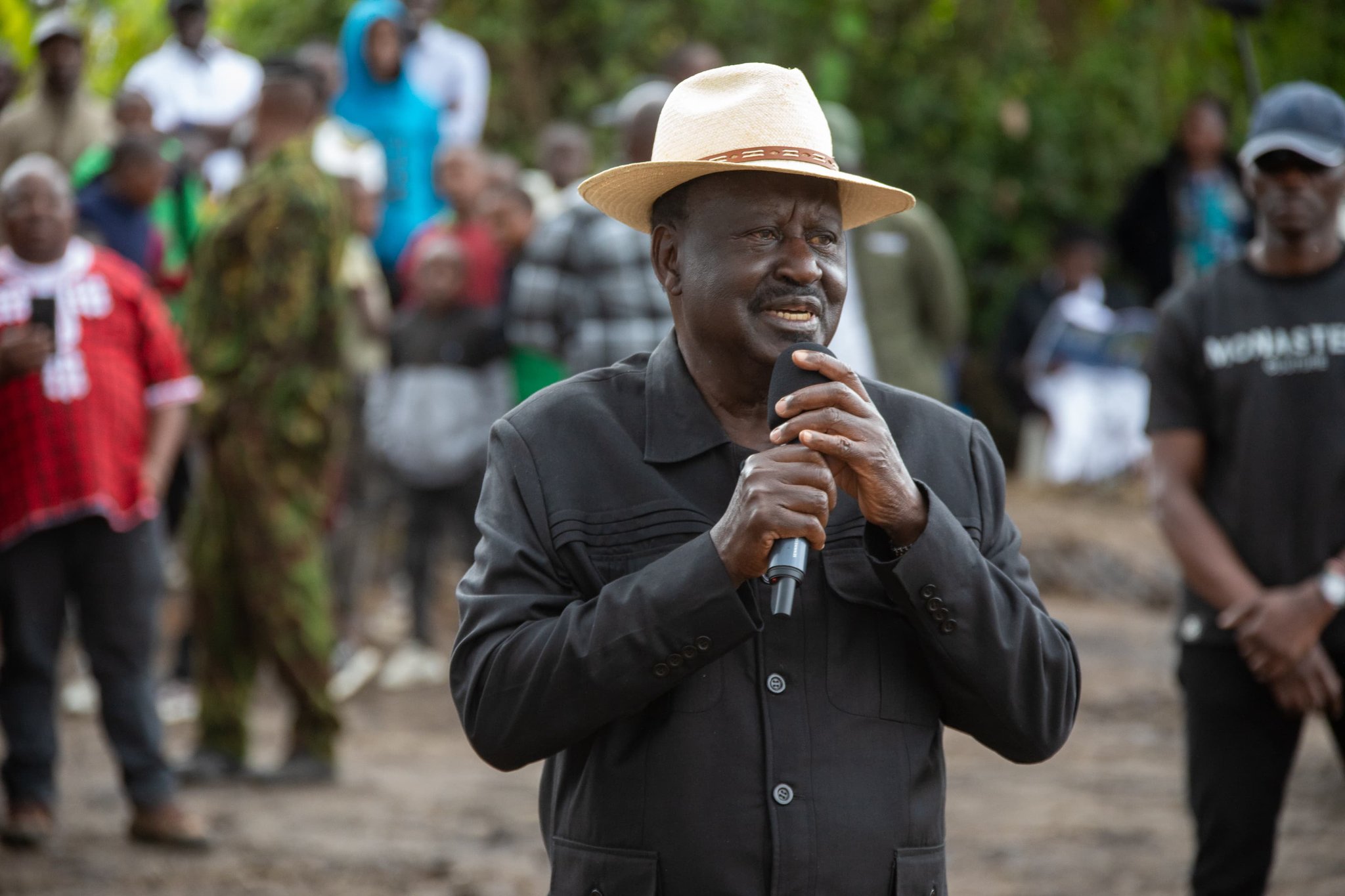
BOMET, Kenya – Orange Democratic Movement (ODM) leader Raila Odinga delivered a passionate defense of Generation Z protesters on Saturday, condemning government officials who have dismissed young demonstrators as irrational while calling for immediate national dialogue to address their grievances.
Speaking at a public forum in Bomet County, the veteran politician directly challenged the narrative that has painted youth protesters as disruptive forces, instead framing them as concerned citizens with legitimate complaints about governance failures.
“Na vijana wale wanaandamana, wale wanaitwa Gen Z, sio wendawazimu. Ni watoto wetu,” Odinga declared in Kiswahili, emphasizing that the young protesters “are not crazy” but “are our children.”
The remarks come as Kenya grapples with sustained youth-led demonstrations that have rocked the country in recent weeks.
The protests have been marked by tragic casualties, with the Kenya National Commission on Human Rights confirming that 38 people died and at least 130 were injured during the July 7 Saba Saba demonstrations alone.
Rather than dismissing the protests, Odinga proposed a comprehensive approach to address youth concerns through structured national dialogue.
His proposal centers on creating an inclusive national convention that would bring together diverse voices from across Kenya’s 47 counties.
“Tuzungumze na wao kwa sababu mimi nimependekeza… kila kaunti ilete vijana ishirini,” he said, suggesting that each county should contribute 20 youth representatives to the dialogue process.
The ODM leader’s vision extends beyond youth participation alone.
He outlined a balanced representation model where 50 percent of delegates would be young people, while the remaining half would include elders, people living with disabilities, civil society organizations, women’s groups, and religious leaders.
“Let this be 50 per cent youth and 50 per cent other citizens, elders, people living with disabilities, civil society, women so that we can have a full national conversation,” Odinga explained.
The youth-led demonstrations have evolved from specific incidents to broader expressions of frustration with governance issues, inequality, and police brutality.
Key protest events include the June 17 demonstration following the killing of Albert Ojwang in Homa Bay, the June 25 march honoring protesters who died, and the recent Saba Saba protests on July 7.
These demonstrations have highlighted deep-seated grievances among Kenya’s youth, who comprise a significant portion of the population but often feel marginalized from political and economic opportunities.
Odinga’s intervention carries particular weight given his role as a key opposition figure and his influence in Kenyan politics.
He warned that ignoring youth frustrations could have serious implications for the country’s political stability ahead of the 2027 general elections.
“Tusiende uchaguzi wa 2027 na hasira mingi,” he cautioned, urging leaders not to let anger fester until the next electoral cycle.
This warning reflects broader concerns about how unresolved grievances could manifest in future political contests, potentially destabilizing Kenya’s democratic processes.
Odinga’s stance positions him as a voice of reason in a charged political environment, potentially strengthening his influence among younger voters who have felt disconnected from traditional political leadership.
His call for inclusive dialogue also challenges the current government’s approach to handling dissent.
The ODM leader’s proposal for a national convention represents a significant political gambit that could either provide a pathway for addressing youth concerns or become another point of political contention if not implemented effectively.
As Kenya continues to grapple with these protests and their aftermath, Odinga’s intervention adds a new dimension to the national conversation about youth participation in governance and the need for responsive political leadership.
Standing Against “Shoot to Kill” Orders
In a separate address at a burial function in Bomet County the same day, Odinga took a firm stance against recent government directives that appear to endorse the shooting of protesters.
His comments directly challenged orders issued by President William Ruto and Interior Cabinet Secretary Kipchumba Murkomen.
“Right now, there is darkness in Kenya because we are angry. There is also a lot of hatred in our nation. People are fighting and getting killed. When you see someone say shoot but don’t kill, it’s because of anger, but anger always leads to loss,” Odinga stated, advocating for arrests and court proceedings instead of violence.
The ODM leader’s position has found support from other political figures, including Kakamega Senator Boni Khalwale, who on Friday urged the government to rescind directives that threaten the lives of Kenya’s youth.
“We don’t kill people. That is why I would like to respectfully disagree with CS Murkomen. I also disagree with the President. These children — if a child has eaten to satisfaction, they cannot go stealing from your home. The government must listen to our youth,” Khalwale said during a public event in Butere constituency.
Khalwale raised practical concerns about the shoot-to-kill orders, questioning scenarios where young people might legitimately approach police stations to report crimes or seek opportunities during recruitment drives.
“What if a young person goes to the police station to file a report that their motorbike has been stolen — and then you say shoot to kill? Where will they take that report?” he posed.
While defending protesters’ rights, Odinga also challenged demonstrators to ensure their actions serve specific purposes.
Drawing from his experience in the 1990 pro-multiparty demonstrations, he emphasized that protests should be strategic rather than perpetual.
“But we said everything has its time and season. So we had a time when people came out to go to the streets for protests. But these demonstrations are not an end to themselves and should not be undertaken every day. They should be a means to an end and must have what it aims to achieve,” he explained.
This nuanced position reflects Odinga’s attempt to balance support for youth grievances with calls for strategic political action, potentially positioning himself as a bridge between frustrated young protesters and established political institutions.
The contrasting approaches to handling protests have created a clear political divide, with government officials taking increasingly hardline positions while opposition figures advocate for dialogue and restraint.
This division adds another layer of complexity to Kenya’s already charged political environment.
The coming weeks will test whether Odinga’s calls for dialogue and restraint gain traction or whether the cycle of protests and increasingly aggressive government responses continues unchanged.
Kenya Insights allows guest blogging, if you want to be published on Kenya’s most authoritative and accurate blog, have an expose, news TIPS, story angles, human interest stories, drop us an email on [email protected] or via Telegram
-

 Business5 days ago
Business5 days ago‘They’re Criminals,’ Popular Radio Presenter Rapcha The Sayantist Accuses Electric Bike Firm Spiro of Fraudulent Practices
-
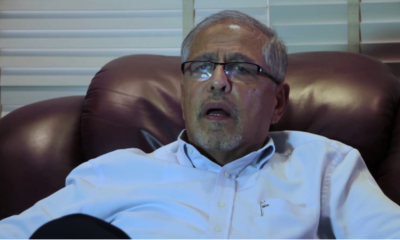
 News1 week ago
News1 week agoTemporary Reprieve As Mohamed Jaffer Wins Mombasa Land Compensation Despite Losing LPG Monopoly and Bitter Fallout With Johos
-

 Sports1 week ago
Sports1 week ago1Win Games 2025: Ultimate Overview of Popular Casino, Sports & Live Games
-
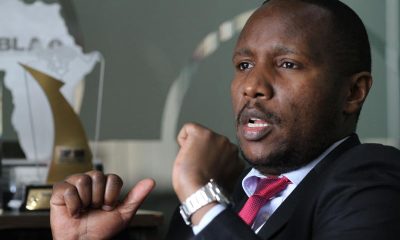
 Investigations1 week ago
Investigations1 week agoFrom Daily Bribes to Billions Frozen: The Jambopay Empire Crumbles as CEO Danson Muchemi’s Scandal-Plagued Past Catches Up
-

 Business1 week ago
Business1 week agoHass Petroleum Empire Faces Collapse as Court Greenlights KSh 1.2 Billion Property Auction
-
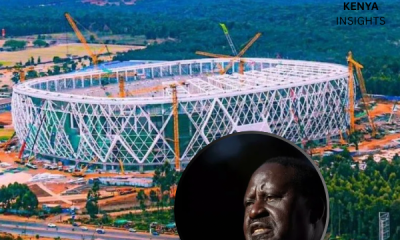
 Investigations5 days ago
Investigations5 days agoDisgraced Kuscco Boss Arnold Munene Moves To Gag Media After Expose Linking Him To Alleged Sh1.7 Billion Fraud
-
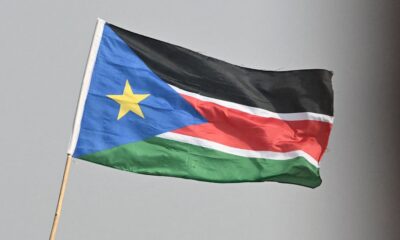
 Africa4 days ago
Africa4 days agoDisgraced Oil Trader Idris Taha Sneaks Into Juba as Empire Crumbles
-

 Investigations5 days ago
Investigations5 days agoFraud: How Sh235 Million Donor Cash For Nyamira Residents Was Embezzled Through Equity Bank Under Governor Nyaribo’s Watch

